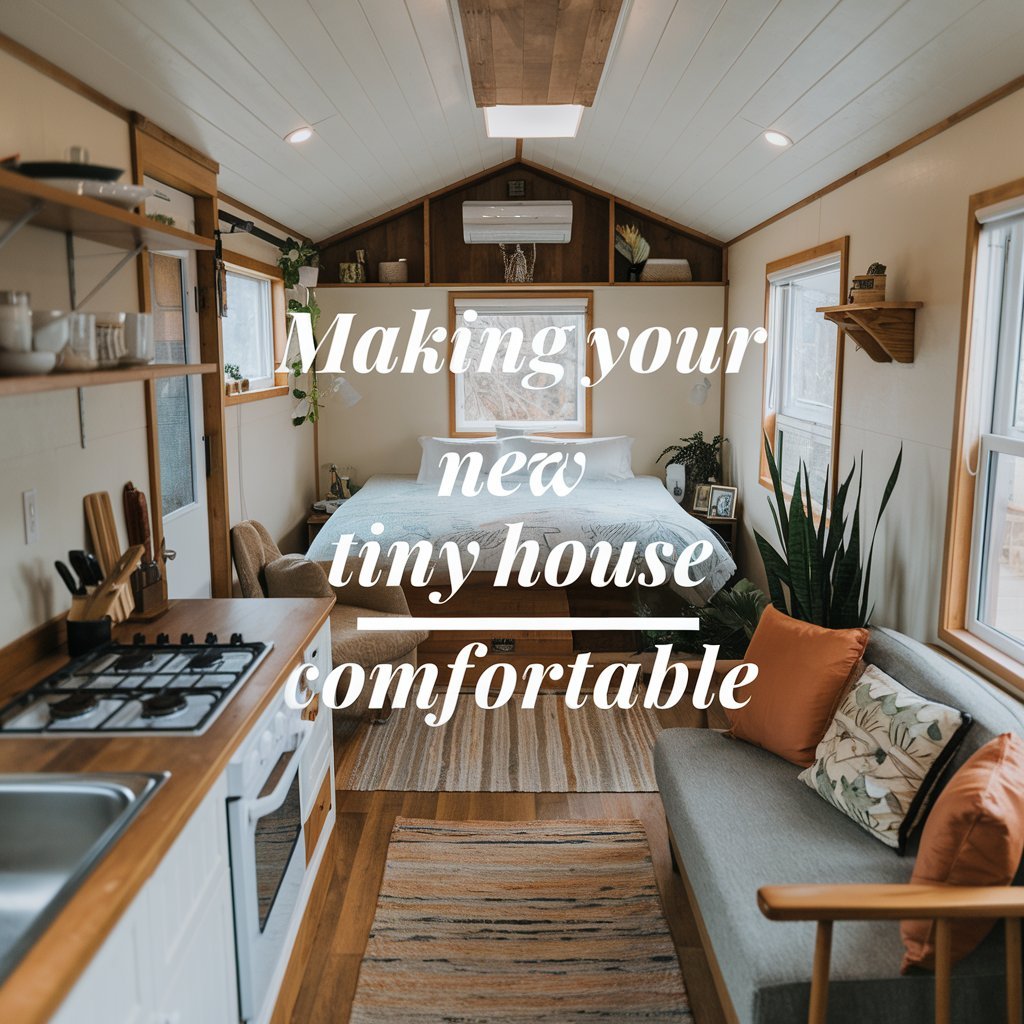Running out of room for your belongings but not ready to move? Your house likely has hidden storage potential waiting to be unlocked. Walls, corners, and ceilings are often overlooked areas that can transform cramped rooms into organized, functional spaces. By focusing on upward expansion, you’ll create a clutter-free environment that feels larger without adding square footage.
This guide dives into creative ways to rethink your layout. You’ll learn how to turn blank walls into smart storage zones and use multi-functional furniture that stretches from floor to ceiling. These strategies aren’t just practical—they’re designed to keep everyday items within easy reach while maintaining a clean aesthetic.
Thinking upward isn’t a new concept, but modern designs make it easier than ever. From floating shelves to lofted beds, the goal is to work with your home’s natural architecture. Even narrow corners or awkward nooks can become valuable real estate with the right approach.
Key Takeaways
- Walls and ceilings offer untapped storage opportunities
- Multi-level furniture maximizes functionality in tight areas
- Ceiling-mounted racks free up floor space for daily activities
- Decluttering regularly ensures vertical systems stay efficient
- Lightweight materials prevent overcrowding elevated storage
Introduction: The Importance of Vertical Storage Solutions
When floor space disappears, look up – your walls hold untapped potential. Traditional storage methods eat into living areas, but shifting focus upward preserves room for movement and activities. This strategy turns dead zones into functional assets while keeping essentials within arm’s reach.

Breaking Free From Floor Clutter
Horizontal surfaces fill fast in compact homes, creating visual chaos. Vertical systems create breathing room by moving items off counters and floors. Studies show organized wall storage reduces stress by 34% compared to cluttered environments.
Many worry about items being too high to access. Strategic placement solves this – frequently used objects stay at eye level, while seasonal gear occupies higher zones. A well-designed layout feels intuitive, not like a climbing challenge.
| Features | Vertical Storage | Horizontal Storage |
|---|---|---|
| Space Used | Walls/ceilings | Floor surfaces |
| Cost Efficiency | $50-$300 setup | $5k+ room additions |
| Aesthetic Impact | Clean, modern lines | Bulky furniture clusters |
Wall-mounted systems cost 92% less than home expansions according to recent housing data. They also let you personalize layouts as needs change – something fixed cabinets can’t match. The key is choosing lightweight materials that won’t strain walls.
Proper vertical organization actually enhances room aesthetics. Floating shelves display decor while holding books, and ceiling racks keep sports gear tidy yet accessible. It’s storage that works double duty as design elements.
Understanding Vertical Storage in Small Spaces
Elevating your storage approach transforms cramped areas without sacrificing style. Wall-mounted systems convert blank surfaces into functional zones while maintaining floor accessibility. Three primary options dominate this category, each serving distinct needs.

Floating vs. Bracket vs. Track Systems
Floating shelves create sleek displays using hidden brackets. They’re ideal for lightweight decor or books, supporting up to 25 pounds. Bracket-mounted units handle heavier loads – think kitchenware or tools – with visible supports that can hold 50+ pounds.
Track systems change the game with modular designs. Aluminum rails mount to walls once, letting you rearrange shelves and hooks as needs evolve. This flexibility makes them perfect for growing families or hobby spaces.
| Feature | Floating Shelves | Bracket Systems | Track Systems |
|---|---|---|---|
| Installation | Wall anchors required | Stud mounting recommended | Single rail setup |
| Weight Capacity | 15-25 lbs | 30-75 lbs | 10-20 lbs per shelf |
| Adjustability | Fixed positions | Fixed positions | Unlimited configurations |
| Aesthetic | Minimalist | Industrial | Modular |
Drywall vs. plaster walls impact installation methods. Use toggle bolts for hollow walls and masonry anchors for brick surfaces. Always verify weight limits with manufacturers.
These systems do double duty as design elements. Floating shelves showcase plants or art, while track systems organize spices in kitchens. The right choice balances functionality with your room’s visual flow.
Utilizing Vertical Space in a Tiny Home
Effective organization in limited square footage hinges on smart upward planning. Start by mapping your walls from floor to ceiling. Measure dimensions and note obstacles like outlets or vents. This groundwork prevents wasted effort and ensures solutions fit seamlessly.

Key Principles for Maximizing Storage
Begin with a structural assessment. Identify load-bearing walls for heavy items and use drywall anchors for lighter systems. A simple laser level helps align installations perfectly. Prioritize zones based on usage frequency – daily essentials at arm’s reach, seasonal items higher up.
| Assessment Factor | Tools Needed | Key Considerations | Impact |
|---|---|---|---|
| Wall Height | Tape measure | Ceiling clearance for tall units | 30% more usable area |
| Structural Integrity | Stud finder | Weight distribution limits | Prevents wall damage |
| Accessibility Zones | Step stool test | Comfortable reach range | Reduces daily strain |
Balance functionality with visual harmony. Group similar items on matching shelves for cohesion. Leave 20% of wall areas empty to avoid overcrowding. Light-colored storage units make rooms feel airier compared to dark, bulky options.
Rotate stored goods quarterly. This practice keeps systems efficient and prevents dead zones. Pair vertical solutions with labeled containers for quick identification. The result? A living environment that works harder without feeling cramped.
Innovative Wall-Mounted Shelving Systems
Wall-mounted shelving transforms underused areas into functional zones without crowding living spaces. These solutions blend practicality with modern design, offering adaptable storage that grows with your needs. Let’s explore two standout options that redefine compact living.

Floating Shelves for Minimalist Appeal
Floating shelves create sleek displays using hidden brackets, perfect for kitchens or bathrooms. Install them above toilets or flanking windows to store towels, spices, or decor. Choose metal anchors for plaster walls and plastic variants for drywall—they hold 15-25 pounds safely.
Group three shelves vertically near entryways for keys and mail. Space them 12-14 inches apart to prevent visual clutter. Lightweight materials like acrylic or thin wood maintain airy aesthetics while supporting daily essentials.
Adjustable Track Systems for Flexibility
Track systems shine in spaces needing frequent layout changes. Mount aluminum rails in home offices or garages once, then slide shelves up/down as needs shift. They accommodate tools, craft supplies, or seasonal items without drilling new holes.
Use 18-inch brackets in laundry rooms for detergent and baskets. Pair with labeled bins for instant organization. These systems adapt to growing collections, making them ideal for hobbyists or families with evolving storage demands.
| Feature | Floating Shelves | Track Systems |
|---|---|---|
| Best For | Decorative displays | Heavy-duty flexibility |
| Installation Time | 20 minutes | 45 minutes |
| Cost Range | $25-$90 | $80-$200 |
Creative Over-the-Door and Ceiling Storage Ideas
Unused doors and ceilings hold surprising storage potential most homeowners never tap. These areas become game-changers for keeping essentials accessible yet out of the way. Smart solutions here blend practicality with clever design.

Multi-Pocket Organizers and Specialized Hooks
Over-the-door systems turn blank surfaces into storage powerhouses. Clear plastic pockets work well in pantries for spice packets or snacks. Fabric organizers with 15+ compartments keep scarves or craft supplies sorted in closets.
Heavy-duty hooks handle bulkier items like brooms or yoga mats. Install them on laundry room doors for ironing boards or drying racks. Choose rust-resistant models for bathrooms to hold towels and robes securely.
Ceiling-Suspended Solutions for Hidden Storage
Kitchens gain breathing room with hanging pot racks above islands. Use swivel hooks for easy access to cookware. Always anchor these systems to ceiling joists – drywall alone won’t support the weight.
Pulley systems store seasonal decor in hard-to-reach areas. Lower the platform when needed, then hoist it back up. For lighter items like bicycles, ceiling-mounted hoists keep floors clear while protecting gear.
| Ceiling Solution | Weight Limit | Best For |
|---|---|---|
| Stainless Pot Rack | 75 lbs | Cookware collections |
| Pulley Platform | 40 lbs | Holiday decorations |
| Bike Hoist | 55 lbs | Sports equipment |
Measure clearance carefully – leave 7 feet of headroom in walkways. Combine these ideas with labeled bins for maximum efficiency. Your home stays organized without sacrificing style or safety.
Tall, Narrow Furniture to Maximize Room Efficiency
Stretching upward with furniture design unlocks hidden storage capacity in compact rooms. Floor-saving pieces like slim bookcases and tower shelves add functionality without dominating your layout. These solutions turn unused vertical zones into organized displays for books, decor, and daily essentials.
Slim Bookcases and Tower Shelves
Measure gaps between appliances or beside doorways to find ideal spots for tall units. A 10-inch-wide bookcase fits snugly next to refrigerators, while 14-inch-deep tower shelves flank windows beautifully. Adjustable shelves accommodate varying item heights – from paperback novels to oversized vases.
| Furniture Type | Ideal Location | Max Weight |
|---|---|---|
| Slim Bookcase | Appliance gaps | 50 lbs |
| Tower Unit | Window walls | 75 lbs |
| Narrow Cabinet | Entryways | 30 lbs |
Prioritize units with these features:
- Anti-tip brackets for safety on carpet or uneven floors
- Reinforced shelves that hold 15+ pounds per level
- Modular designs allowing height extensions
Glass-front cabinets maintain visual lightness in small rooms. Pair them with woven baskets on lower shelves for concealed storage. This approach keeps spaces airy while providing practical access to frequently used items.
Corner Units and Stackable Storage Containers
Corners often gather dust instead of storing essentials—until now. These angular zones become organizational heroes when equipped with smart solutions. By combining specialized corner units with modular containers, you create storage that climbs upward while staying accessible.

Maximizing Unused Corners
Triangular shelving systems fit snugly where walls meet, adding 3-5 tiers of display or storage. Rotating lazy Susan-style organizers let you spin items into view without digging. For tight spaces between appliances, 10-inch-deep units hold spices or cleaning supplies.
| Corner Unit Type | Capacity | Best Use |
|---|---|---|
| Floating Shelves | 15 lbs/shelf | Decor/books |
| Wire Baskets | 8 lbs/basket | Produce/toys |
| Floor-to-Ceiling Cabinet | 200 lbs total | Kitchenware |
Benefits of Stackable Bins and Cubes
Modular containers let you build custom towers that adapt to changing needs. Transparent bins reveal contents instantly, while fabric cubes hide clutter stylishly. Always place heavier items at the base and limit stacks to 5-6 units high for stability.
Choose cube sizes that match your shelf dimensions—12-inch squares work for most systems. Label each container’s front edge for quick identification. This approach turns dead space into a dynamic storage partner that evolves with your lifestyle.
Pegboard and Grid Wall Systems for Adaptability
What if your walls could adapt to your storage needs as quickly as your life changes? Pegboards and grid systems turn static surfaces into dynamic organizers. These solutions keep everyday items visible yet orderly, eliminating the “out of sight, out of mind” dilemma.

Tool and Hobby Organization Techniques
Pegboards shine in workshops and craft rooms. Use J-hooks for power tools and looped clips for extension cords. Paintbrush handles stay secure in angled holders, while small parts organizers snap onto the board’s surface. Label each section with chalk markers for quick identification.
In kitchens, grid panels hold utensils with magnetic strips. Spice jars mount on floating shelves attached to the grid. This setup keeps cooking essentials within arm’s reach without cluttering countertops.
Customizable Modular Designs
Grid walls grow with your needs through interchangeable accessories. Start with basic hooks and shelves, then add:
- Wire baskets for produce or office supplies
- Clip-on lights for task areas
- Fabric pockets for mail sorting
| Feature | Pegboard | Grid System |
|---|---|---|
| Material | Perforated hardboard | Metal wire framework |
| Weight Capacity | 8-12 lbs per hook | 15-20 lbs per shelf |
| Best For | Garages, craft rooms | Retail displays, kitchens |
Installation takes under an hour with basic tools. Use wall anchors in drywall or secure directly to studs for heavy loads. These systems prove that smart storage doesn’t require permanent changes – just creative thinking.
Multi-Level Hanging Solutions for Kitchens and Closets
Transform overlooked airspace into functional storage zones with multi-tiered systems. These clever designs help store essentials while keeping surfaces clear and accessible. Both kitchens and closets benefit from strategic upward organization that adapts to your daily needs.
Tiered Baskets for Produce and Pantry Items
Ceiling-mounted racks with cascading baskets create instant storage for kitchens. Suspend them above islands or counters to hold fruits, onions, or snack packages. Three-tier systems offer 4-6 cubic feet of space without touching countertops.
| Basket Type | Capacity | Best For |
|---|---|---|
| Wire Mesh | 8 lbs | Root vegetables |
| Acrylic | 5 lbs | Packaged goods |
| Fabric Pockets | 3 lbs | Herb bundles |
Install hooks into ceiling joists for secure mounting. Leave 18 inches between tiers for easy access. This approach keeps frequently used items visible yet out of the way during meal prep.
Vertical Clothes and Accessory Organizers
Closets gain 500% more capacity with cascading hanger systems. One main hook supports multiple arms, letting five garments occupy the space of one. Pair with slim velvet hangers to prevent slippage and save room.
Key features for success:
- Reinforced steel hooks supporting 25+ pounds
- Adjustable tiers spaced 10 inches apart
- Clear shoe pockets on door interiors
Rotate seasonal clothes to higher levels as needed. Add labeled bins above rods for off-season storage. This system turns cramped closets into orderly spaces that work smarter, not harder.
Platform Floors and Pull-Out Beds to Save Space
What if your living area could transform into a guest-ready bedroom in seconds? Modern platform designs turn floors into multi-functional zones. Raised platforms with hidden compartments store bedding while creating elevated lounging areas. Lift a panel, and a queen-sized mattress slides out smoothly – perfect for unexpected visitors.
Smart Conversions for Compact Living
Platform floors often include drawers for linens or seasonal clothes. Build them 16-18 inches high for comfortable seating. Pair with foldable side tables that tuck away when not hosting guests. This approach keeps your main room clutter-free while maximizing every square foot.
Need a workspace? Wall-mounted ladder desks offer shelves for office supplies and a pull-down surface. The angled design saves space while adding visual interest. Choose units with corkboard panels for notes – ideal for tight apartments needing flexible storage solutions.
These innovations prove small homes can adapt effortlessly. By blending clever engineering with sleek design, you create rooms that serve multiple purposes without compromise. Your bedroom becomes an office by day, then transforms back at night – all through smart furniture choices.



